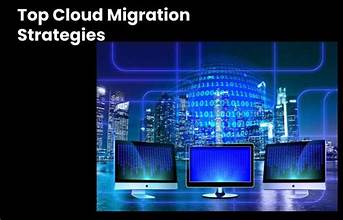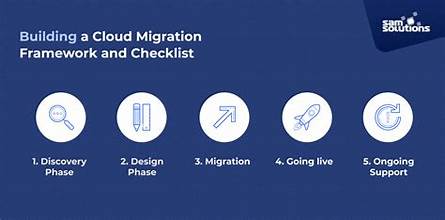
In the rapidly evolving world of technology, cloud migration has become a critical strategy for businesses aiming to enhance flexibility, scalability, and cost-efficiency. As we approach 2024, adopting effective cloud migration strategies will be essential for staying competitive and leveraging the full potential of cloud computing. This guide outlines the best practices for a seamless transition to the cloud, ensuring that businesses can achieve their cloud migration goals with minimal disruption and maximum benefit.
1. Define Clear Objectives
Before initiating a cloud migration, it’s crucial to define clear objectives and goals. Understanding what you aim to achieve with cloud adoption—whether it’s cost savings, enhanced performance, or greater scalability—will guide your migration strategy. Establish specific, measurable, achievable, relevant, and time-bound (SMART) objectives to ensure that your migration efforts are aligned with your business goals.
2. Assess Your Current Environment
Conduct a thorough assessment of your existing IT environment to identify applications, data, and infrastructure that will be migrated to the cloud. This assessment should include an inventory of your current assets, their dependencies, and performance metrics. Understanding the complexity and requirements of your existing environment will help you determine the most suitable cloud solutions and migration approach.
3. Choose the Right Cloud Model
Selecting the appropriate cloud model is a key factor in successful migration. The main cloud models include:
- Public Cloud: Best for scalability and cost-effectiveness. Suitable for applications with variable workloads.
- Private Cloud: Ideal for organizations requiring higher security and control. Suitable for sensitive data and critical applications.
- Hybrid Cloud: Combines public and private clouds, offering flexibility and the ability to scale resources as needed. Ideal for businesses with diverse needs.
Evaluate the specific needs of your organization to determine which model or combination of models will best support your objectives.
4. Develop a Comprehensive Migration Plan
Create a detailed migration plan outlining the steps, timeline, and resources required for the transition. This plan should include:
- Migration Phases: Break down the migration into manageable phases, such as assessment, planning, execution, and optimization.
- Risk Management: Identify potential risks and develop mitigation strategies to address them.
- Resource Allocation: Determine the personnel, tools, and budget required for each phase of the migration.
A well-structured migration plan will help ensure that the transition is executed smoothly and that all aspects of the migration are covered.
5. Prioritize Security and Compliance
Security and compliance are paramount during cloud migration. Ensure that your cloud provider meets industry standards and regulatory requirements relevant to your business. Implement robust security measures, including:
- Data Encryption: Encrypt data both in transit and at rest to protect it from unauthorized access.
- Access Controls: Use identity and access management (IAM) tools to control who can access your cloud resources.
- Regular Audits: Conduct regular security audits and assessments to identify and address potential vulnerabilities.
By prioritizing security and compliance, you can mitigate risks and protect your organization’s sensitive information.
6. Leverage Cloud Migration Tools and Services
Utilize cloud migration tools and services to streamline the migration process. These tools can automate tasks, reduce manual effort, and minimize the risk of errors. Some popular cloud migration tools include:
- AWS Migration Hub: Provides a centralized view of your migration projects and progress.
- Azure Migrate: Offers tools and guidance for assessing and migrating on-premises workloads to Azure.
- Google Cloud Migration Center: Helps with assessing, planning, and executing cloud migrations to Google Cloud.
Using these tools can help simplify the migration process and ensure a smoother transition.
7. Ensure Data Integrity and Application Performance
During migration, it’s essential to maintain data integrity and application performance. Implement a testing and validation process to verify that data has been accurately migrated and that applications are functioning as expected. Perform performance benchmarks before and after migration to ensure that applications meet the desired performance levels.
8. Train Your Team
Invest in training and upskilling your team to ensure they are well-prepared for managing and operating in the cloud environment. Provide training on cloud services, security practices, and new tools to ensure that your team can effectively support the cloud infrastructure.
9. Monitor and Optimize
Once the migration is complete, continuously monitor and optimize your cloud environment. Use cloud management tools to track performance, manage costs, and identify areas for improvement. Regularly review your cloud strategy and make adjustments as needed to ensure that you are maximizing the benefits of cloud computing.
10. Plan for Future Scalability
As your business grows, your cloud infrastructure should be able to scale accordingly. Plan for future scalability by choosing cloud solutions that offer flexibility and the ability to accommodate increasing workloads. Implement auto-scaling features and review your cloud resources regularly to ensure they align with your evolving business needs.
Conclusion
Cloud migration is a complex process that requires careful planning and execution. By following these best practices, businesses can achieve a seamless transition to the cloud, enabling them to leverage the benefits of increased flexibility, scalability, and cost-efficiency. As we move into 2024, staying informed about the latest cloud technologies and strategies will be key to maintaining a competitive edge in the digital landscape.









